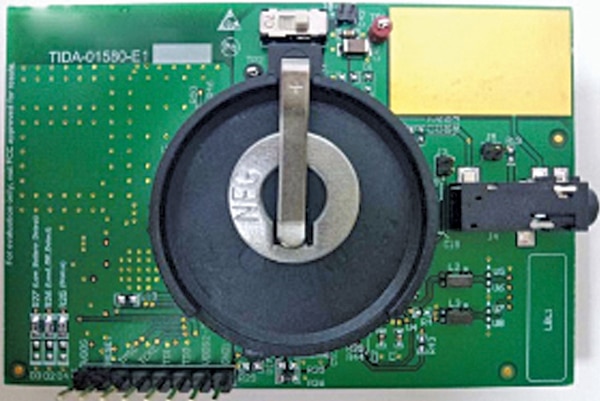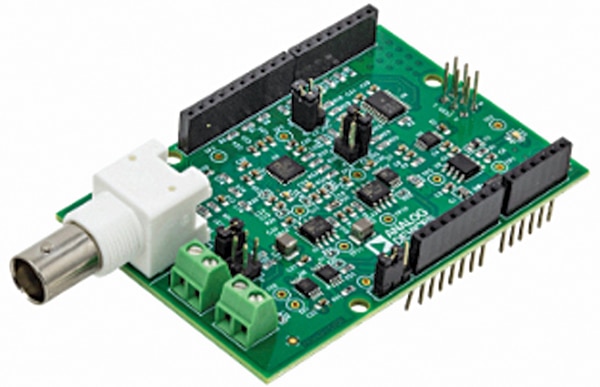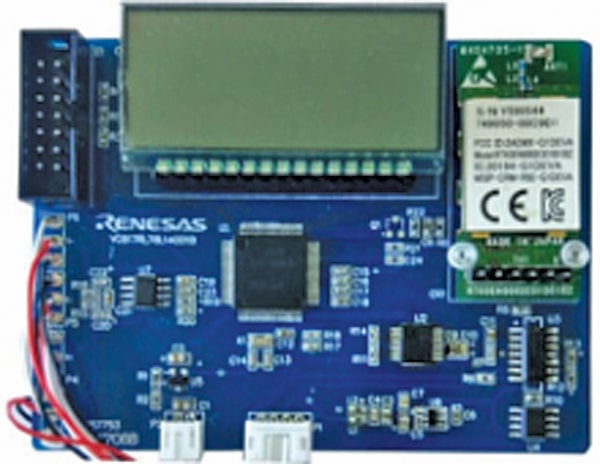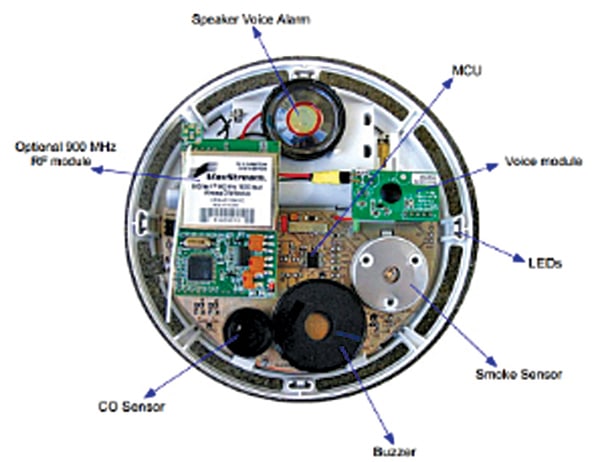Reference Design for ECG, SpO2, PTT, and Heart Rate Monitor

Key Attraction
Reference design for a compact wearable device that enables ECG (electrocardiography) and PPG (photoplethsymography). It can also share raw data for SpO2, heart rate, and PPT (partial thromboplastin time). It can work for up to 30 days on a single cell.
Highlights
TIDA-01580-E1 from Texas Instruments (TI) is a reference design of a simple, wearable, multiparameter, patient monitor that is powered by an ARM Cortex M3 microcontroller (MCU). The design employs AFE4900—a single-chip, biosensing front end for measuring synchronised electrocardiography (ECG) and photoplethysmography (PPG). It integrates a CC2640R2F, which adds Bluetooth connectivity to the reference design and also features a 2.4GHz RF transceiver that enables wireless data transfer through BLE 4.2 and 5.0. Apart from measuring ECG and PPG the reference design also provides raw data to calculate SpO2, heart rate, PPT, etc. The reference design features four LEDs and three photodiodes, with digital ambient subtraction to improve the signal-to-noise ratio (SNR). The small form factor and low power requirement make it suitable for implementation in various wearable applications. It can work for up to 30 days with a single cell.
Application
The module is suitable for use as a wearable in patient monitoring devices.
OEM Brand: Texas Instruments (TI)
For more information: click here
Reference Design for Oxygen Concentrator

Key attraction
Reference design for an open source oxygen concentrator based on molecular sieve and pressure swing adsorption technique. This open source oxygen concentrator can give a maximum oxygen flow of 6 litres per minute (LPM).
Highlights
The OpenOx is an open source hardware oxygen concentrator developed primarily by Hacklab, a community-supported hackerspace and improved by various individual contributors. This open source oxygen concentrator design can give a maximum oxygen flow of 6 litres per minute (LPM) with an oxygen concentration level ranging from 85% to 95% while consuming merely 580W of power. The OpenOx concentrator uses a molecular sieve and pressure swing adsorption methodology to produce the oxygen gas output. The oxygen concentrator has an air compressor, two cylinders filled with zeolite granules, a pressure-equalising reservoir, and some valves and tubes. It has a simple design and is optimised for fast production. The module weighs about 20kg and measures 550mm x 400mm x 300mm. All the software of the reference design is released under GNU General Public License V3, and all the hardware are under the CERN Open Hardware License.
Applications
This reference design can be used to generate oxygen for patients in hospitals and at homes.
OEM Brand: Hacklab + individual contributors
For more information: click here
Reference Design for Handheld TDS Meter

Key Attributes
Reference design for a handheld TDS (total dissolved solids) meter that employs direct measurement of conductivity of the solution to detect the TDS.
Highlights
CN0411 from Analog Devices (ADI) is a reference design for a compact total dissolved solids (TDS) measurement system. The TDS monitor uses the direct measurement of the conductivity of the solution technique to detect TDS. The main advantage of this design is that it uses a standard BNC probe connection, making it both faster and cheaper to design. The frequency of the excitation in this design is controlled by a PWM signal from the microcontroller. The reference design is also Arduino form-factor compatible. For higher accuracy, the reference design also has a temperature compensation that is performed using either a 100Ω or 1,000Ω 2-wire RTD. The design is capable of measuring low to high conductivity levels ranging from 1μs to 0.1s and can accommodate 2-wire conductivity probes of different cell constants from 0.01 to 10.
Application
The reference design can be used for measuring the total dissolved solids (TDS) in water.
OEM Brand: Analog Devices (ADI)
For more information: click here
Reference Design for Smart Body Fat Scale

Key Attraction
Reference design for a smart body fat scale that can display body weight, body mass index (BMI), body fat percentage, and body impedance.
Highlights
This Smart Body Fat Scale from Renesas is a reference design capable of measuring weight and displaying complete information about your body composition. The reference design includes four weighing sensors along with four metal electrodes for body impedance measurement. The reference design employs a Renesas RL78/L1A microcontroller (MCU) that adds Bluetooth connectivity to the device. The user needs to feed information such as height, gender, and age, while the weight and body impedance is measured by the smart scale. The MCU utilises all the above data to compute body fat percentage and other health parameters, which are displayed on an LCD monitor. Furthermore, the data is displayed on the smartphone application simultaneously. The smart body fat scale is suitable for healthcare bio-sensing applications.
Application
The reference design is suitable for measuring body composition.
OEM Brand: Renesas
For more information: click here
Reference Design for CO Detector

Key Attraction
Reference design for a carbon monoxide (CO) sensor that can measure amount of CO and smoke particles in the atmosphere and alert the users when the level of CO particles becomes dangerous.
Highlights
This Carbon Monoxide (CO) Detector reference design from Zilog is based on electrochemical-cell sensor technology. The electrochemical sensors are more robust than any other CO detector. It is based on a Zilog’s Z8 Encore XP microcontroller (MCU) and the Sixth Sense ECO-Sure (2e) CO sensor. The on-chip integrated hardware of the MCU minimises the board space with very few external components. The MCU also implements a power management routine to conserve power. An optional 900MHz RF module can be added to the reference design that can add wireless networking and monitoring features, making it suitable for various applications. This unit runs on three AA-size batteries and has a blinking LED indicator to indicate the status of the detector. With little modification, the design can be run using rechargeable lithium-ion batteries.
Application
The reference design is suitable for use as a CO sensor used in refineries, garages, homes, and waste-water treatment systems to make them safer.
OEM Brand: Zilog





